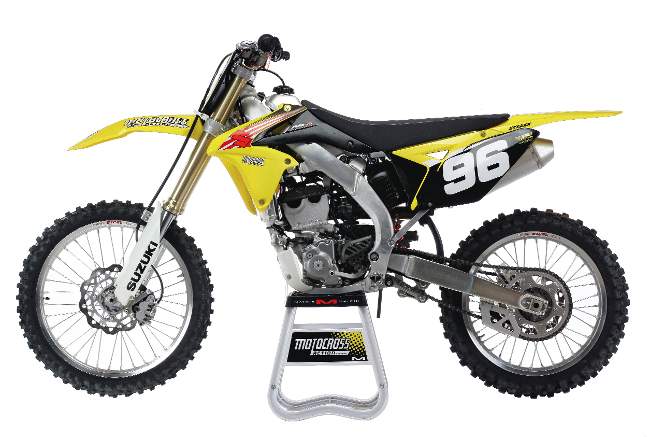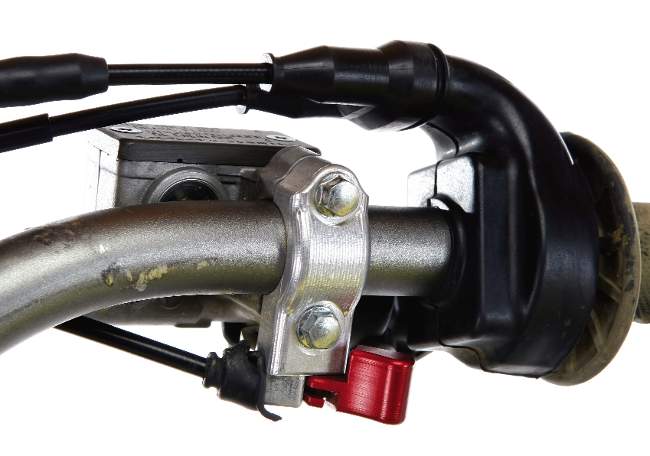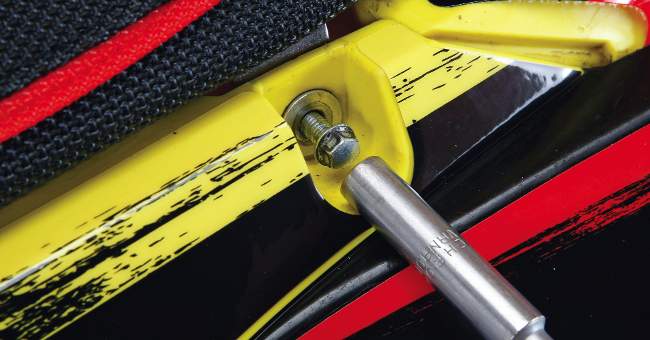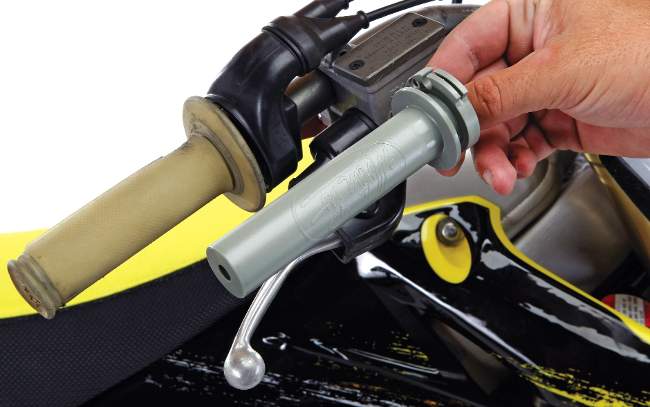MXA PERFORMANCE GUIDE 2011 SUZUKI RM-Z250

The first generation of Suzuki RM-Z250s weren’t built for the average motocross racer as far MXA is concerned. Suzuki’s original target rider was an anorexic 12-year-old who never revved his engine. The fork and shock springs were soft, and all the power was on the bottom. Thankfully, in 2010, Suzuki made tons of changes, but no one celebrated for the simple reason that nobody had the motorcycle (it was a very late release). Kudos to Suzuki for making a considerable number of changes (34 by our count) once again to the 2011. Better news still is that Suzuki’s previously anorexic target rider bulked up and learned to pin it, because this bike is awesome.
As a super-quick handling machine, the Suzuki has long been a favorite of MXA testers on tight tracks and any layout that favors cornering. Now, the yellow 250 is coveted on race days too. MXA riders were quick to sign up for testing duties on the “Zook,” and we put in tons of hours tuning it in. We paid attention to new features for possible design or manufacturing weaknesses; we searched for modifications that made the greatest improvement in performance. Here are some of our favorite mods (and since the 2012 RM-Z250 is -dentical to the 2011 model, all the mods apply).

Exhaust. The larger core of any aftermarket system will perk up the responsiveness of the RM-Z. Yoshimura R&D’s relationship with Suzuki means that they have more access to RM-Zs than any other brand. That means extra time massaging their RM-Z250 exhaust systems on the dyno. Their new RS-4D (the “D” is for dual core) is pretty trick, but we stuck with the RS-4 to go for maximum power gain. The pipe boosted mid- to top-end power and improved over-rev. In general, even though over-rev doesn’t make a dyno chart look impressive, it’s a huge improvement to Pros and rev-rangers on the track who can make better use of top-end power and wait just a bit longer to shift.

Clutch. When it’s fresh, the stock clutch is okay, but it tends to soften up and lose crispness. From there, it’s a snowball effect. The Suzuki transmission is adequate for the relatively low loads created by the 250cc bike (the 450 is another story), but riders can start to miss shifts when the clutch gets sloppy. When you miss a shifting point, you fall off or climb past the peak-power range of the engine. This means either having to feather the spongy clutch or shift under an even greater load. Firmer clutch springs are a simple fix. We got had good luck with stiffer clutch springs from Pro Circuit, Barnett and Hinson.

Hot-start lever. We got lucky in not breaking the plastic hot-start lever on our 2011 RM-Z250; we weren’t so lucky with the RM-Z450. But make no mistake: it’s still vulnerable to being smashed by long-legged knee-brace wearers or any crash-induced collisions. Since it’s not a crucial part (you can still start the bike and race without it), we’d recommend waiting until it breaks and then replacing it. DR.D was a throttle-side, hot-start pioneer, because it prevented four-stroke newbies from flooding accelerator pump-equipped bikes. This is a non-issue with the EFI Suzuki, but the throttle-side thumb lever is still nice. Works Connection makes clutch side hot start triggers.

Chassis setup. The Suzuki carves around turns like a knife. While it’s definitely everyone’s top pick for the handling award, for a full-race setup, we think it’s beneficial to cheat all the settings toward the stability side of the spectrum. We set the sag at 102mm to 104mm (instead of 100mm) to drop the rear end. For this setup, we went in two extra clicks on the fork compression and in one extra click on the rebound to keep the forks up in their stroke. We slid the forks down until the top cap was flush with the top of the triple clamps. We left an extra link in the chain to move the axle rearward in the swingarm. The gain in stability in rough sections made the extra link worthwhile.

Steering stem. To accompany the chassis adjustments, some riders like to play with the tightness of the steering-stem nut, which acts like a cheap steering stabilizer. Here’s how to do it: With the bike on the stand and the front wheel off the ground, give the handlebars a light tap. Do they hit the steering-lock stops with a thud? If so, turn the steering head nut clockwise just a few degrees and repeat the process until the answer is no. This is a good setting that helps prevent the front end from darting around in uneven terrain without binding up the steering input.

Graphics. From the factory, the Suzuki is partially naked. Once the plastics started to look haggard, we spruced it up with a graphics kit. Given our druthers we like to custom design our own graphics with the help of Design works. These are durable, screen-printed graphics can be custom-made with your logo, sponsors or catchy phrase. Contact them at www.decalmx.com. During bike prep, Maxima SC-1 really shines up the black components, but don’t spray the seat.

Bolt kit. We don’t believe that Suzuki uses the highest-quality bolts. Some are soft enough to break if slightly over-tightened and some (like the seat bolts) just seem too small to begin with. There are four good strategies to address this issue.
(1) Have a spare bolt kit on hand. Tekbolt has several high-quality, bike-specific options.
(2) Be diligent about using a torque wrench during maintenance.
(3) When you remove high-stress bolts, on the sprocket and brake rotors for example, replace them.
(4) When you double-check the tightness of bolts between rides, loosen and then retighten the bolts instead of continually tightening them; otherwise, the bolts will stretch, weaken and eventually break.

Throttle tube. For all intents and purposes, Suzuki’s throttle tube and throttle-side hand grip are a one-piece unit. We pitch the throttle away and get Motion Pro’s Titan throttle tube. It is only $25, and if you break it in a crash (up to five years later), they will replace it.

TPS guard. On some model bikes (like the RM-Z250), the throttle position sensor is located in an exposed and vulnerable position on the throttle body. The TPS can be kicked off by the rider’s boot or knocked off by roost. Some teams rig up some foam padding to protect it, but LightSpeed built a much tricker carbon fiber option after their RM-Z250 test rider broke two of his sensors. This part costs $45.95 from www.lightspeedperf.com and also fits KTM throttle bodies.

Chain guide. There is a neck-and-neck race for who has the shortest lifespan: butterflies, WWI fighter pilots or the chain guides on Japanese motocross bikes. TM Designworks guides redirect the force of impacts, are lube-impregnated, come in an attractive bright yellow and have a replaceable insert on the chain guide. They also offer a bearing-equipped upper chain roller that replaces the non-bearing unit of the 2011 RM-Z. The only downside is a little clacking with the harder plastic material.




Comments are closed.